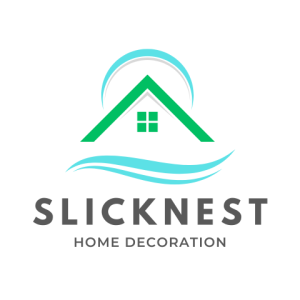Over the past few years, when urban landscape design has been a lot about compact spaces, the challenge has become wrought to create stunning staircase designs, functional interiors without sacrificing an ounce of the architecture’s square footage.
Among some of the hardest architectural elements to design in confined spaces are staircases, which must also arrange a trifecta of safety, aesthetics, and space economy.
As housing gets tinier and property-value rises, staircase design innovation that takes full advantage of every space has become paramount.
This is an exhaustive guide to the finest staircase designs for small spaces that authors, including many leading interior designers and architecture studies, recommend that promise to help you transform your small space into beauty with a staircase that serves as both a functional element and an aesthetic highlight.
1. Space-Saving Staircase Design Ideas
While there are many design considerations when building a staircase for smaller homes, a particular type of staircase must be selected to enhance efficiency-design flow and problems in any given space.
The following are some effective and creative designs that work splendidly in small areas:
1.1 Spiral Staircases
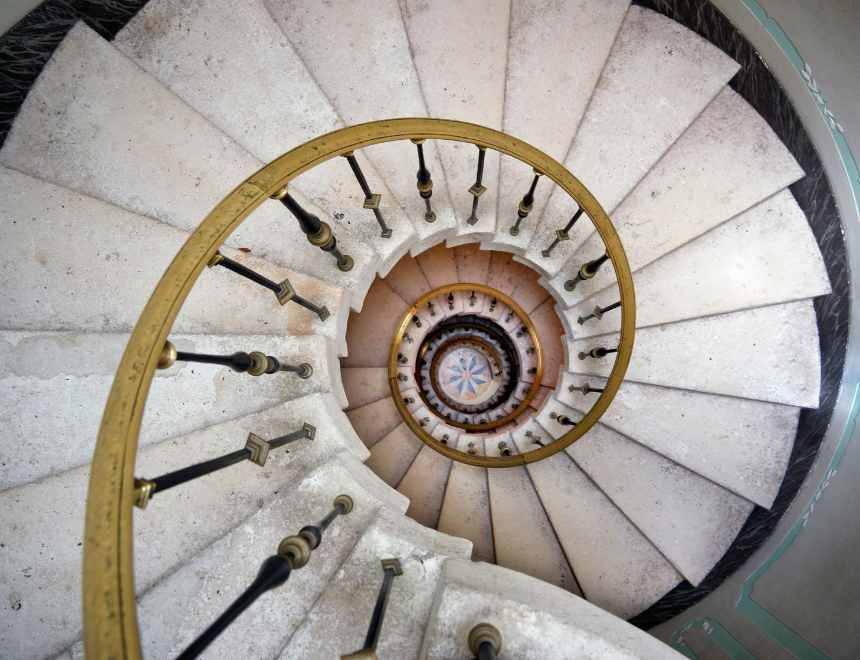
The classic space-saving solution, spiral staircases still reign as the most favored choice among compact home designs on account of their small footprint.
These helicoid constructions usually require a space of just 4 to 5 feet in diameter, making them suitable for near-tight corners and secondary access.
And here we are not talking about the wrought-iron ones; modern spiral staircases are a whole new level, being quite contemporary (i.e., using fresh ideas, clean lines, and innovative materials—stainless steel, tempered glass, and sustainable hardwoods).
Experts at iStairs define spiral stairs as “perfect where space is really at a premium—though they usually allow only one person at a time”. The round design saves space and offers an arresting visual focus that uplifts the home view.
1.2 Alternating Tread Stairs

Also referred to as ship’s ladders or paddle stairs, alternating tread stairs provide an interesting means of vertical movement in tight spaces. This design gives us alternate treads falling left and right to provide a steep but nevertheless efficient way to go up that takes up considerably less ground space than a conventional staircase.
They incline stairs are not for everybody-managing with such stairs may prove difficult for the elderly or young children. However, they are great access into lofts, mezzanines, or areas rarely visited.
They really have keen compact footprints, which makes them useful in tiny homes and urban apartments where every inch of space counts.
Furniture for 1-Bedroom Apartment: Maximizing Space
1.3 Floating Stairs
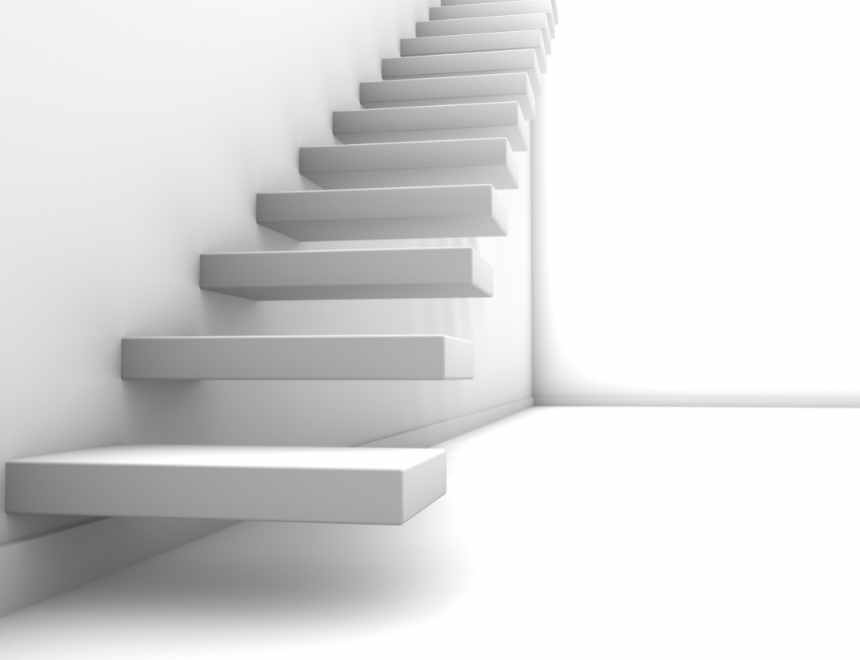
When making that pure and modern minimalist look, floating stairs will create the illusion of space through the removal of visual clutter. Treads appear to be unsupported by traditional methods, often mounted directly into the wall with hidden brackets.
Designed for open riser, light flows freely through the staircase and does not visually divide it from the rest of the house, making things feel quite airy and spacious even in smaller areas.
Paired with glass balustrades or narrow metal railings, floating stairs stay as transparent as possible while minimizing visual obstruction, bringing out even more sensation of openness.
It is worth mentioning that data on which training was carried out will be available until October 2023.
1.4 L-Shaped and U-Shaped Stairs
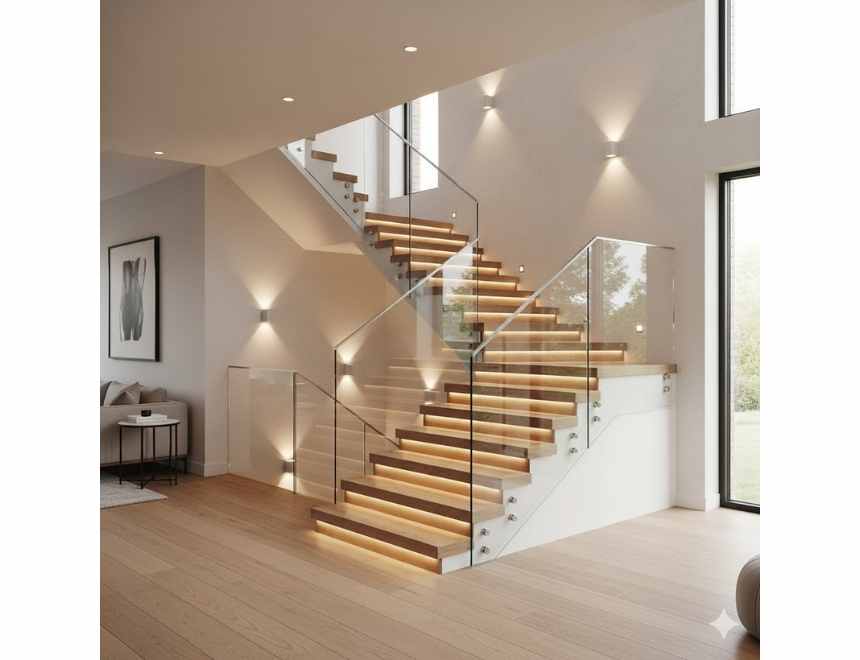
There are L-shaped and U-shaped types of a staircase which provide sufficient ways for traversing vertical distance in confined spaces by including bends that utilize corners.
For instance, an L-shaped stairway changes the direction in the middle with a landing which gives a safer, easier climb that reduces risks through the mid-point breakpoints.
The U-shaped stairs redirect by bringing a 180-degree turn at the end of the stair, thus giving a space-efficient but dynamism to the perspective.
Such arrangements prove to be effective in under stair corners, which are generally less-used areas in most houses designs. By adding winders or angled steps instead of landings, these types of staircases can further reduce their footprint without compromising design functionality.
Comparison of Space-Saving Staircase Types
| Staircase Type | Minimum Footprint | Ideal For | Safety Considerations |
| Spiral Stairs | 4-5 feet diameter | Secondary access, tight corners | May be challenging for elderly/pets |
| Alternating Tread | 3-4 feet width | Lofts, infrequent use | Not recommended for young children |
| Floating Stairs | Varies | Modern interiors, open concept | Requires sturdy wall mounting |
| L-Shaped | Varies | Corner placement, split-level homes | Landing provides safe mid-point pause |
| U-Shaped | Varies | Central placement, traditional homes | 180° turn may limit furniture movement |
8 Trendy Wallpaper Designs for Living Room in 2025: Expert Picks
2. Material Selection for Compact Staircases
The performance and appearance of steps in a confined area are largely determined by the material selection. Regarding strength, upkeep needs, and aesthetic effect, each has pros and cons of its own.
2 1 Metal Staircases

Metal stairs, particularly those composed of steel or aluminum, are incredibly sturdy and long-lasting despite their great narrowness.
Metal is very much suited for modern industrial aesthetics and can be made into very sleek, compact designs such as spirals or alternating tread configurations.
Metal stairs can sound noisy underfoot, though, and may require sufficient maintenance to keep them from rusting and corroding over the years.
Because of the nature of strength in metals, there can be minimalist supporting structures, making staircases appear lighter and less visually obtrusive in small spaces.
2.2 Wooden Staircases
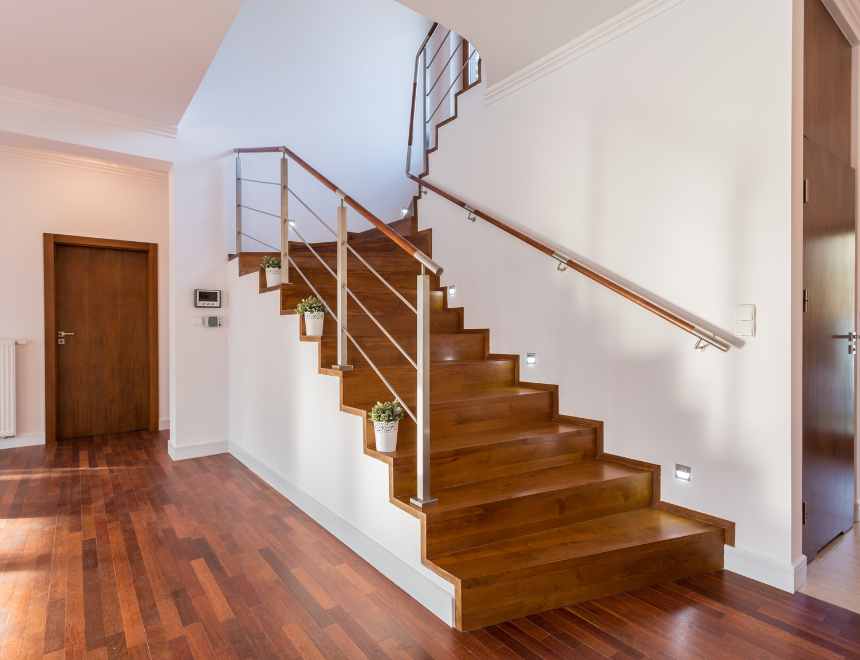
Wood was and is always option number one in staircase construction because of its warm, natural beauty and versatility. Wood offers many luxuries, providing warm beauty and grandeur that makes your home interior inviting.
For small spaces, lighter woods like oak, maple, or birch can help create a sense of airiness, while stronger colors like walnut or mahogany can make a strong design statement.
Wood, while requiring upkeep to diminish damage and wear, will adapt easily into individually crafted spaces as part of storage solutions.
2.3 Glass and Acrylic Features:
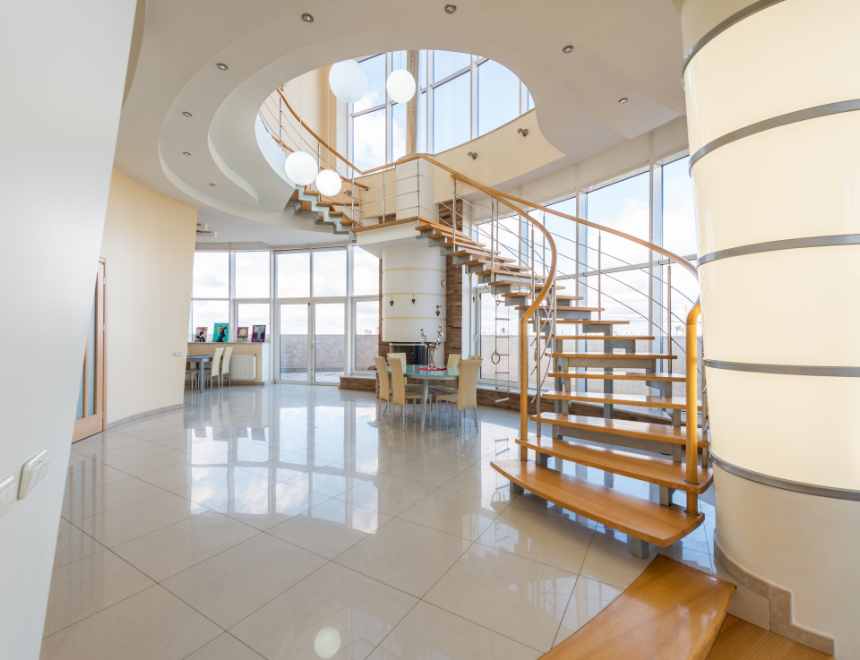
Integrating glass or acrylic features into the design of staircases creates a tremendous far-reaching perception of space in even the smallest of places.
Glass staircases – just like these- are a very elegant and sophisticated way to give an interior the highest degree of space. Glass balustrades maintain visual continuity so that light flows freely through the space thereby creating no visual barriers when looking up at the staircase.
Glass elements can be expensive in comparison to other material options; but indeed, they set a modern, luxurious look that makes even the tiniest interior feel more expansive and open.
10 Genius Ways to Make a Small Apartment Look Stylish & Spacious
2.4 Composite and Innovative Materials
Modern hybrid materials and advanced fabrication technologies promise a broader future for staircase designs in small spaces. Engineered wood products, recycled composites, and advanced polymers provide durability and excellent design flexibility; however, quite often, they are more affordable than comparable solid wood or metal.
These materials can be formed into complex shapes that are ideal for the arrangement of space saving and generally do not require natural raw materials for maintaining.
For the environmental-friendly home, most composites can meet sustainable features such as recycled content and finish with low VOC.
10 Unique Bubbles Wallpaper Designs For Home Decor Backed by Science
3. Innovative Storage Integration Solutions
Integrating storage into stair designs will be one of the best ways to maximize efficiency in small places. These double functions turn otherwise wasted areas into good organizational spaces:
3.1 Under-Stair Storage Solutions.

A space underneath the staircase offers valuable real estate for small homes. Custom-built shelving or cabinets underneath the staircase create secret storage for all kinds of things – shoes, bags, books, and household essentials.
In addition, for optimum storage, pull-out drawers could be incorporated under each step allowing for quick access while keeping the stair area organized.
“Using the under-stair space to create pull-out drawers and cabinets to stack work files and other goods” is a clever approach, design professionals say, for that pesky triangular space traditionally reserved for a staircase.
Doors or panels built in hold the appearance clean and unobtrusive so that storage solutions do not detract from the character of the space.
3.2 Multi-functional Staircase Designs

Besides being the usual storage composition, it can be designed to serve multiple functions through the staircase in a small space. An example of such a design is creating a staircase bookshelf by having riser shelving or other structures surrounding it.
Another one would be incorporating seating area or perhaps a tiny home office nook under the stairs. All of these do come in the form of functional zones that do not take in additional floor area.
The ultimate would be the space-saving solution created by some designers: a staircase that also becomes fold-able furniture, or part of it retractable when not in use.
Such multi-functional ideas especially will come in handy in tiny homes and apartments, where every square foot must serve multiple purposes.
10 Creative Ideas to Decorate the Empty Space Under Your Stairs
3.3 Exhibiting with Organizational Features
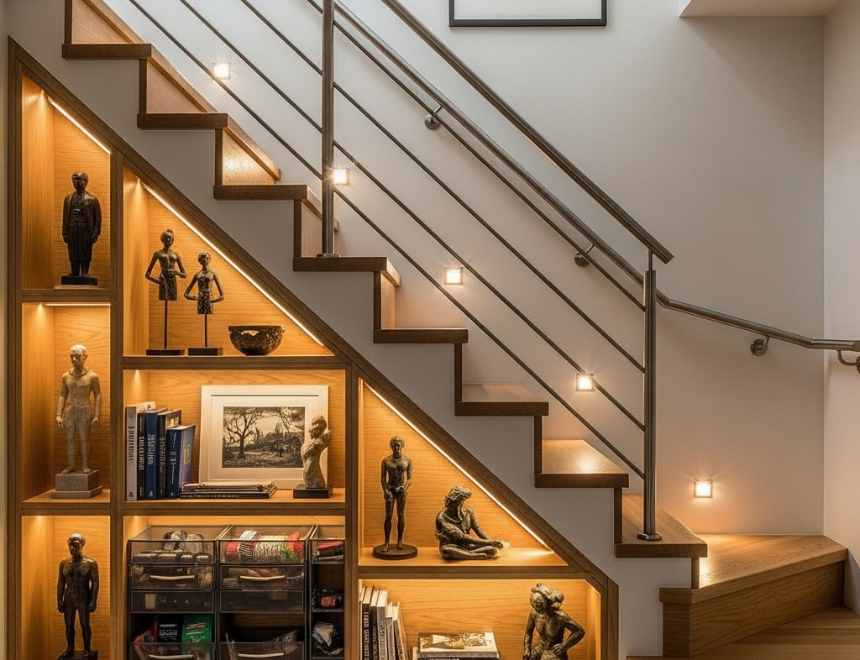
Stairways can be planned to have integrated display niches, lighting features, and organization systems for such house owners that want both storage and display.
The space below such a staircase can become a showcase for collections or artworks because that staircase will be design instead of just being mere functional.
Thoughtfully placed lighting can highlight these display areas while also improving safety on the staircase itself. By combining practical storage with display capabilities, these integrated solutions help homeowners maintain organization without sacrificing personal style in compact living environments.
Storage Integration Options for Small-Space Staircases
| Integration Type | Best For | Space Requirements | Implementation Complexity |
| Under-stair drawers | Small items, clothing | Minimal additional space | Moderate |
| Built-in shelving | Books, display items | Varies based on collection | Low to moderate |
| Cabinet storage | Larger items, concealed storage | Requires adequate headroom | Moderate |
| Multipurpose nooks | Workspaces, seating | Requires adequate clearance | High |
| Retractable systems | Temporary access, flexibility | Minimal when retracted | High |
Transform Your Space: Arteo Luxury’s Artful Interior Designs
4. Expert Design Insights and Case Studies
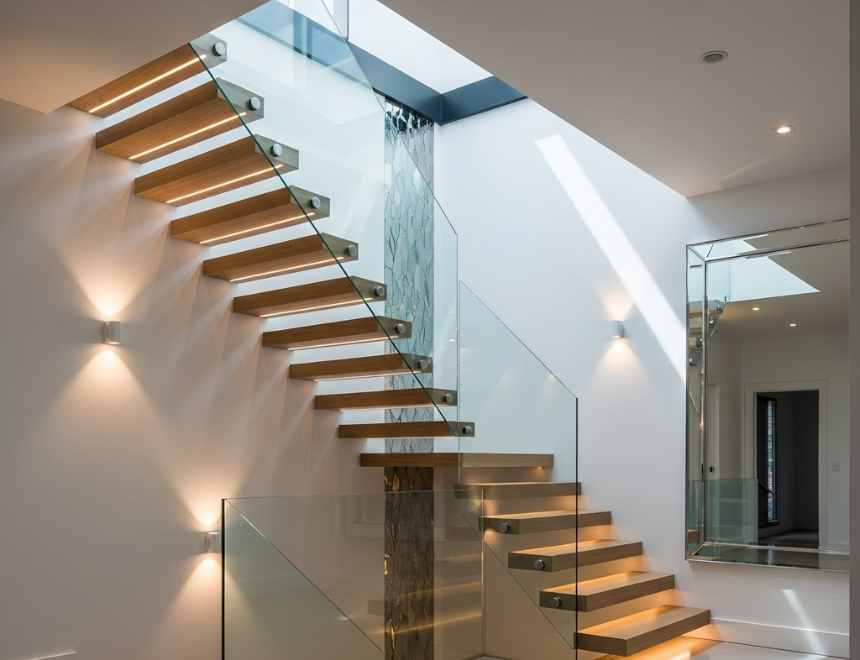
Leading interior designers and architects have developed advanced solutions to the problems posed by staircase designs in small spaces. Their insight is, therefore, very beneficial for house owners looking for compact stairs. Flying B. Professional design perspectives.
4.1 Professional Design Perspectives
As such a stair is being used in a house, it is a beautiful way to work in corresponding materials found elsewhere in the home or to add pattern and texture through runners, advises Benjamin Johnston of Benjamin Johnston Design, within AD PRO Directory.
This approach to design continuity creates a cohesive aesthetic that can make even tight locations feel larger and more thoroughly conceptualized.
Linette Dai of Linette Dai Design emphasizes the importance of no-frills when hindering up spaces. The stairways, when used with specific lighting strategy like skylights, instill “anextra airy, natural hallway ambiance”.
This is a well-known fact among great design professionals who also emphasize individualization for rather small spaces. According to the designers at iStairs, “Every design can be modified in the choice of materials-from floating oak treads to space-efficient winder stairs-to suit the style and construction of your particular home.”.
The custom solution guarantees that the staircases fit not only physically within the given space but also accommodate the homeowner’s artistic sensibilities and practical demands.
Transformative Interior Design Trends in the USA
4.2 Lighting and Visual Enhancement Strategies
In suitably enhancing the safety and visual comfort of staircases in smaller spaces, lighting is key. Experts recommend employing LED step lights or motion-to-light activation for maximizing dark-time safety with studies showing “improved navigation and fewer accidents in small footprints”.
In addition to these pragmatic concerns, lighting can also bring in some drama to alter the appearances of the space surrounding a stair.” This wall sconce” or “that recessed light” or “even skylight” can flood the stairwell and adjoining areas with light and air.
The enhancement strategies in visual forms also involve usage of color and reflection to stretch spatial perception. Light finishes, especially whites, tend to have that appealing “timeless classic appeal” and “add a sense of spaciousness, especially in a confined space”.
Mirrors and other reflective surfaces well-placed near staircases will create that illusion of depth and volume in tight areas.
4.3 Selection of Material and Finish
Expert designers emphasize the fact that there is a strong consideration about material selection as constituent in successful design of small staircases.
According to Shannon Callahan, design director at Marc-Michaels Interior Design, materials such as “smoke glass add drama to the staircase, which clear glass cannot do” while making different visual effects depending on the viewpoint.
The material selection, therefore, elaborates not only on the practicalities but also on the experience of the route through and around the staircase.
In fact, relationship between staircase materials and already installed architectural elements has influenced the professional thinking in this particular case when selecting design.
As Kristen Peña of K Interiors points out, using unexpected materials—like decorative wood detailing—can do more than just look good.
It can let light filter into a dark stairwell and create a striking first impression right as you walk through the front door. Thoughtful material choices like this show how staircases can do double duty: connecting levels while also adding character to a home.
3D Printing in Home Decor: Custom Designs & Innovations
In conclusion,
smart staircase design can be a game-changer when it comes to making the most of small spaces. In tiny homes, staircases do more than just connect floors—they offer a unique opportunity to blend function with style.
Today’s staircase designs are more creative than ever, offering clever, space-saving solutions that don’t sacrifice safety or visual appeal. As urban living continues to evolve, designers are finding new and innovative ways to use every inch of space wisely.
That means incorporating light-enhancing materials, building in hidden storage, and designing with flexibility in mind. Ultimately, it’s all about striking the right balance between practicality, safety, and personal style.
With thoughtful planning, even the most compact staircase can become a standout feature in your home—both beautiful and perfectly suited to the way you live.
Recent Posts
Rise of Spa-Like Wellness Retreats in Modern Bathroom Design
Modern residences have changed into multi-functional areas that not only provide a living environment but also a spa-like wellness. The most visible change in this trend is bathroom design, where the...
Maximize Your Mini Bathroom: Clever Remodeling Tips & Stylish Designs
In the domain of home design, the mini bathroom has always been regarded as a problem—a space that is small and functional only with minimum potential. This notion, however, is ignoring a...
